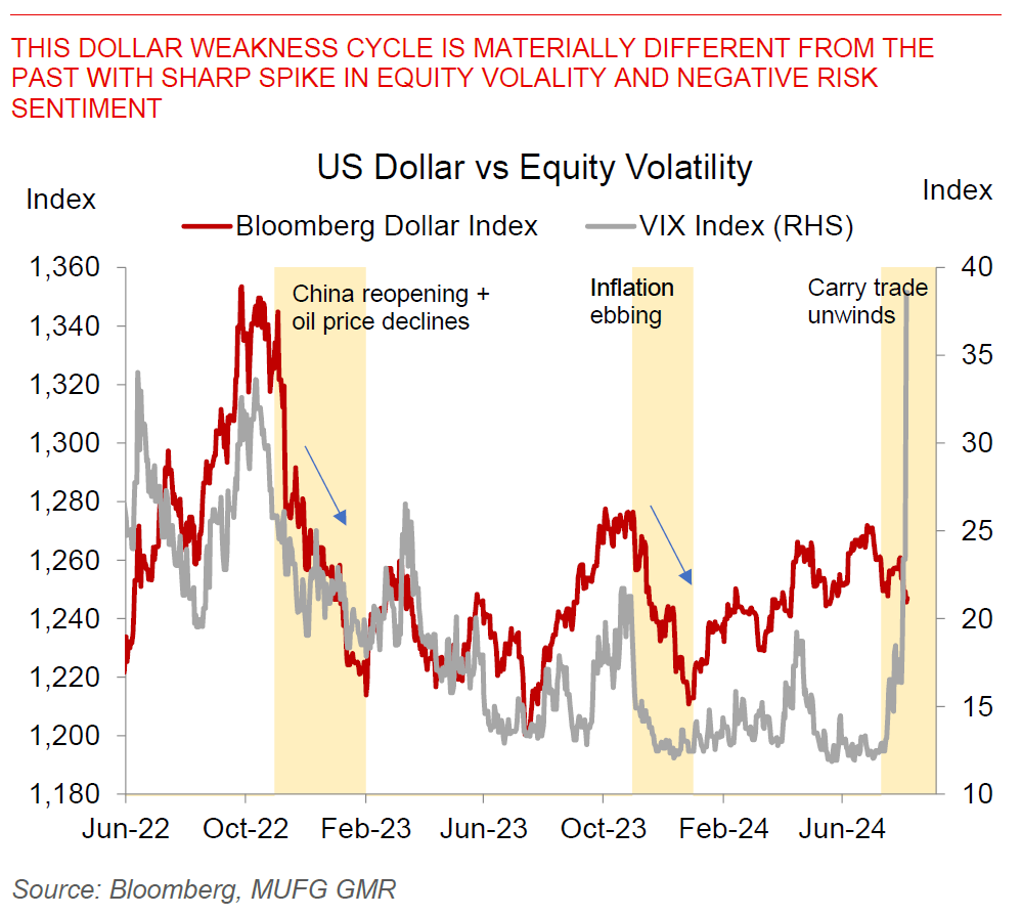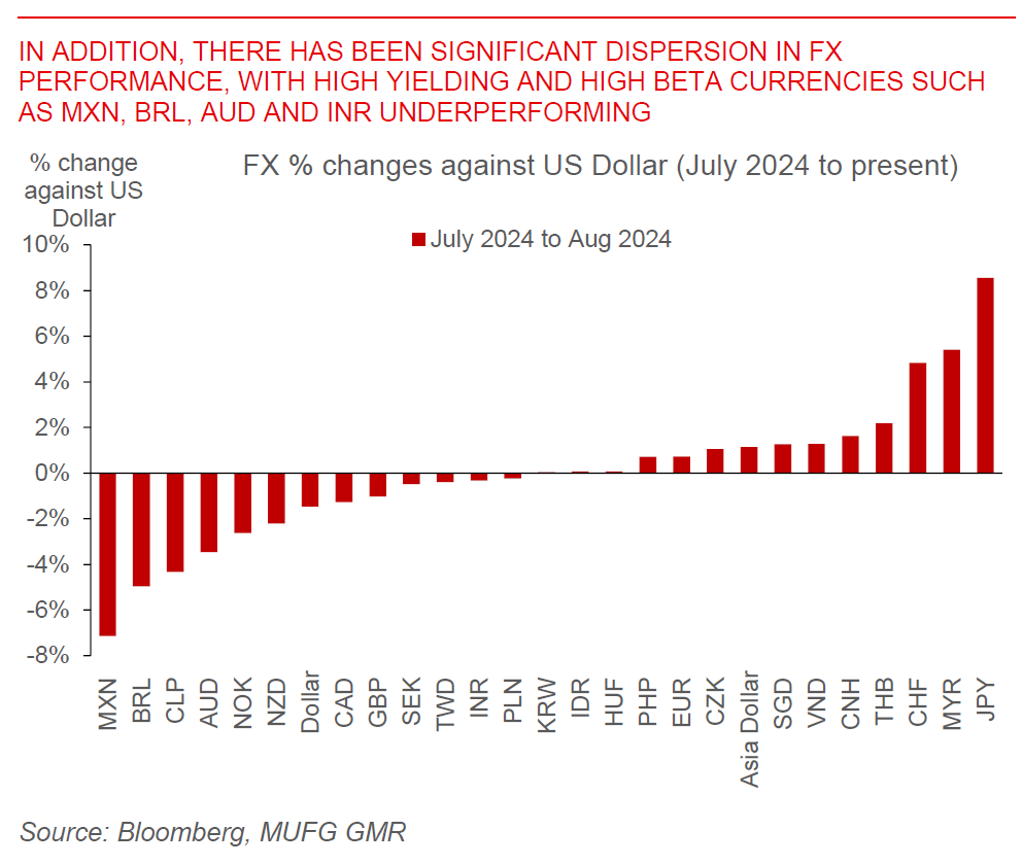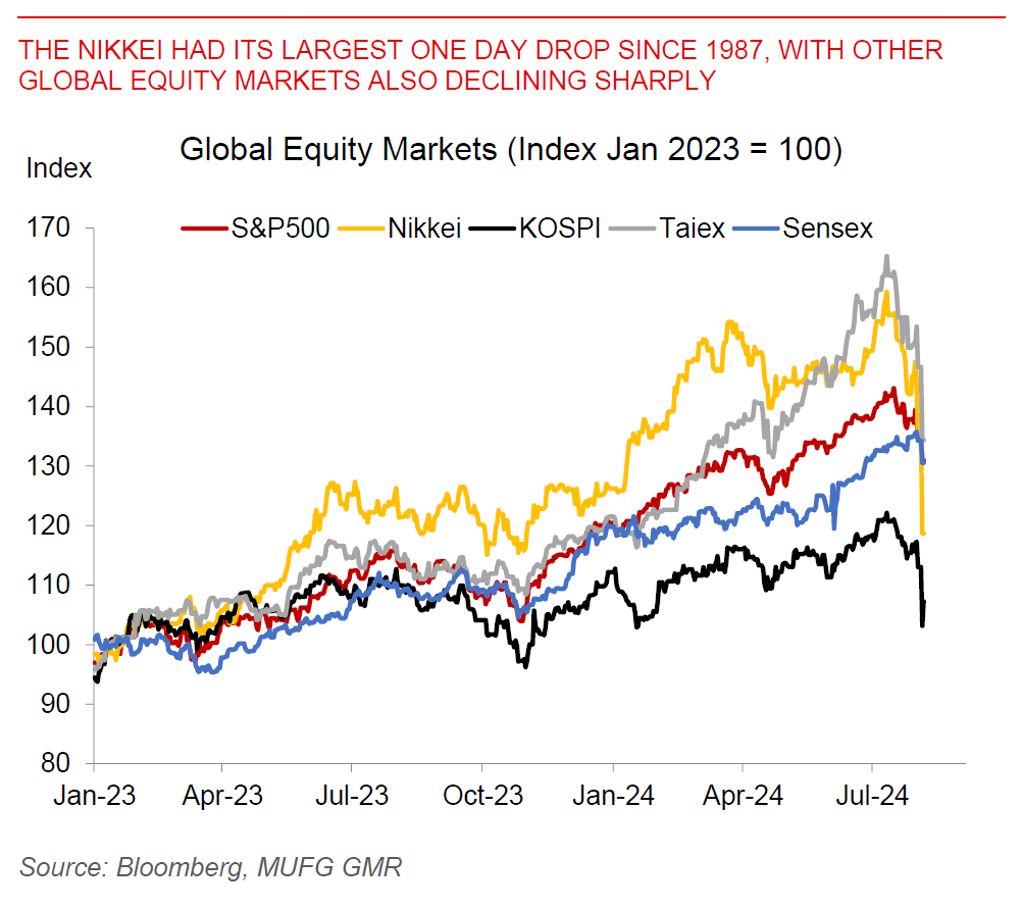Ahead Today
G3: Eurozone retail sales, RBA Policy meeting, US Trade balance
Asia: Philippines CPI, Philippines Trade Deficit, Taiwan CPI
Market Highlights
Monday 5 August was a monumental day for markets. The Nikkei fell 12% which was the largest 1 day decline since 1987, the S&P500 fell 3% to end the day with the largest intra-day spike in the VIX volatility index since 1990, while the Korean stock index the KOSPI fell 8.8% (the largest since 2008) with circuit breakers triggered during the day.
A key trigger was certainly the weaker than expected non-farm payrolls last Friday resulting in both a big reset in Fed rate cut expectations coupled with recession fears. Nonetheless, the bigger underlying theme in the market of carry trade unwinds was already happening for some time since July, and certainly accelerated as the Japanese Yen strengthened sharply against the Dollar from 160 closer to 142 at one point yesterday. Popular carry trades including long MXNJPY and short CNHINR have likely been closed, while investors who were borrowing cheap (for instance the JPY or CNH) to take on more risk such as buying the NASDAQ could also have been forced to deleverage as global equity markets imploded.


From an FX perspective, while the Dollar was weaker in aggregate, it’s important to note that this cycle looks meaningfully different from recent Dollar weakness cycles seen in 4Q2022 and 4Q2023. For one, there has been a significant dispersion in performance, with the JPY the clear outperformer (and perhaps also the source of market turmoil), and high beta and high carry currencies including MXN, BRL, AUD and INR underperforming. Second, the Dollar has been weakening even as risk sentiment weakened sharply and equity volatility spiked as recession fears took hold, a dynamic which is somewhat unusual.
So where to from here? Our best sense is that the price action seems somewhat exaggerated from a fundamental perspective, and should be partially viewed as positioning adjustments and also deleveraging by investors who have borrowed cheap money excessively. Yesterday’s stronger than expected US ISM Services is a case in point, and indicative of a US economy which is slowing certainly, but not collapsing and encountering sharp layoffs by any means. While we do not think that market trends should be linearly extrapolated from here, this is not to say that the deleveraging dynamics will not continue. Certainly the massive market moves seen are also suggestive of more leverage in the system than we anticipated, and could bring more market volatility to come.
Regional FX
From an Asia FX perspective, we still like THB, MYR, KRW and SGD from a fundamental perspective and helped by the carry trade unwinds. INR has been moving against the tide due to carry trade unwinds, and we think the divergence should change at some point given the country’s good fundamentals, but probably not yet given unhelpful seasonality right now for imports. From an Asia rates perspective, the softening in US Dollar may shift the balance of risks towards the more dovish central banks such as the Philippines and Korea cutting. Indonesia could also cut earlier if IDR remains stable. On that note, we will get the Philippines’ CPI and trade deficit numbers today. We expect Philippines inflation to rise in July to 4.1%yoy, but should moderate more materially from August with rice import tariff cuts. Meanwhile, the trade deficit should remain contained at around US$4.3bn. All these should support our call for USDPHP to move more towards the 57.5 handle, and the BSP to start its rate cutting cycle this quarter (see Philippines – From Divergence to Convergence).

